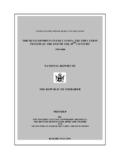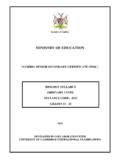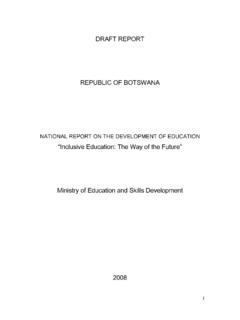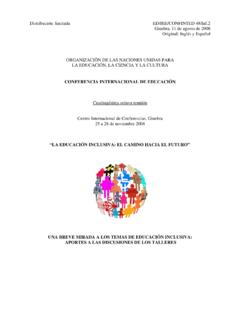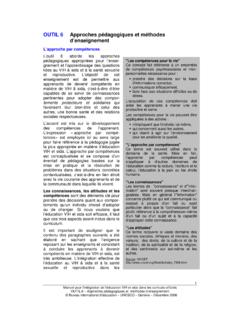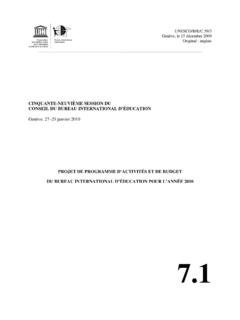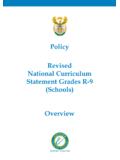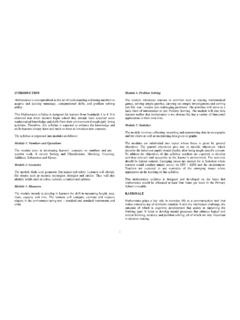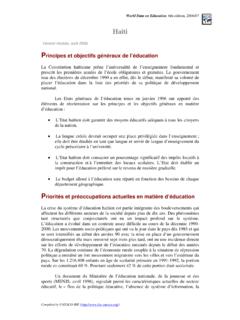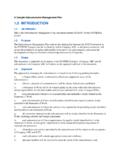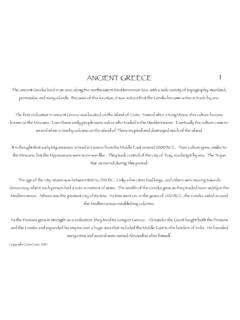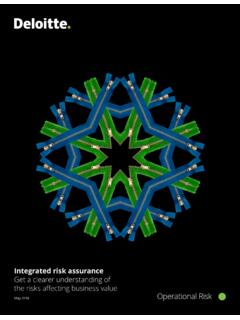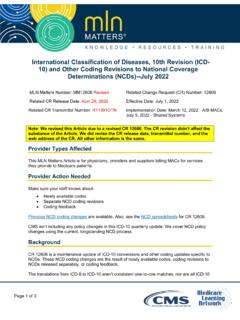Transcription of Effective Teaching Strategies in Special Needs Education
1 Effective Teaching Strategies in Special Needs Education What works ? Philippe Tremblay Universit Libre de Bruxelles Tivat, Montenegro November 2007. Moving Towards Inclusion Teachers must be able to problem solve and have the ability to informally assess the skills a student Needs Teachers must be able to set high but alternative expectations and assessments which are suitable for the students Teachers must be able to modify assignments and include all students in the lesson Teachers need to learn how to value all kinds of skills, not just academic ones, and provide daily success for all students Modifying & Adapting Curriculum 1.
2 Size--Teachers Size should modify how many items the student is expected to learn or finish. 2. Time--Students Time should be given more time for learning, completing a task, or taking a test. 3. Level of support given--amount given of personal assistance increased for students with Special Needs Modifying & Adapting Curriculum 1. Teaching method--Teachers must change the way that instruction is delivered to the students. 2. Level of difficulty--Skill difficulty levels, problem types, and rules on how to approach the work should be modified to fit Needs .
3 3. Assessment-- Assessment Modify how the student can respond to the instruction given, whether through hands-on materials, verbal responses, or communication books 22 Teaching Strategies (Mitchell, 2008). 1. Inclusive Education 2. Cooperative group Teaching 3. Peer tutoring 4. Collaborative Teaching 5. Parent involvement 6. School culture 7. School-wide positive behavioural support 8. Indoor environmental quality 9. Classroom climate 10. Social skills training 11. Cognitive strategy instruction 12. Self-regulated learning 24 Teaching Strategies 13.
4 Memory Strategies 14. Reciprocal Teaching 15. Phonological awareness 16. Cognitive behavioral therapy 17. Functional behavioral assessment 18. Direct instruction 19. Review and practice 20. Formative assessment and feedback 21. Assistive technology 22. Augmentative and alternative communication + Differentiated Instruction What do we mean by evidence? 1. The intervention is clearly described and followed 2. Behavioural outcomes are clearly described 3. Learner characteristics are clearly described 4. Variables are controlled 5.
5 There is no contamination 6. Side effects are acceptable 7. There is a sound theory underlying the intervention 8. There has been adequate follow-up 9. The research has been carried out in natural conditions 10. The published results have been reviewed by peers 11. The research has been replicated 12. The intervention is cost Effective 13. The research has practical significance 14. The research is accessible Parent Involvement Respect parents' rights, skills and Needs '. Parents' roles Why develop partnerships?
6 Why do some parents need support? What are the levels of parent involvement? How can we develop Effective partnerships? Barriers Cooperative learning Group of students with different abilities working together to accomplish a goal (Johnson & Johnson, 1989). Cooperative activities compliment direct instruction and are structured so students are positively interdependent but individually accountable for their work. Teachers can efficiently provide help as needed for all students. Cooperative Group Teaching Help learners to learn from each other'.
7 Four essential ideas: { Interdependence { Individual accountability { Cooperation { Evaluation Two types of groups { Mutual assistance groups { Cooperative groups (jig-saw puzzle). What are the teacher's roles in cooperative group Teaching ? { Design appropriate group tasks { Teach group process skills { Deal with problems Peer Tutoring Utilize peers to teach each other . Elements of Peer Tutoring include: 1. Peer Assisted Learning 2. Role Modelling 3. Mentoring 4. Facilitating experiences of school life Benefits of peer Tutoring Enhance a Sense of Community Increase Student Motivation Increase Student Learning Peer Tutoring One student acts a tutor and one as the tutee.}}}}}}}}}
8 Students can be same-age or cross-ages Typically 20 minutes of tutoring and 7 minutes of testing For drills, exercises, reading, New materials, Teacher input, Whole-class explicit instruction, Active student responding, Exchangeable roles, Correction systems, Public displays of results, Social rewards. Cognitive Strategy Instruction Teach learners ways of thinking'. What is cognitive strategy instruction? Some learners have inefficient learning Strategies . General strategy instruction think ahead think during think back Specific strategy instruction, , story-writing: Why, Who, Where, What, How Learning Strategies Acronym (ex.)
9 : What they know, what they want to know, what they learn (KWL). Semantic mapping Discussion webs Rhyme/Song Movement/Hands on learning Storytelling/Drama Key Word Picture Alternative Algorithm Scaffolding Lecturing/Activating prior knowledge Manipulation Analogy Technology Lecturing A common Teaching strategy, is an effort to quickly cover the material: however, it often overloads and over-whelms students with data, making it likely that they will confuse the presented facts Adaptation of KWL. K W H L. (what I know) (what I want to (how I can find (what I learned).))
10 Know) this information). Scaffolding Bridges the gap between what students know and can do and the intended goal Provides temporary support to students when new skills or concepts are presented Includes cueing, prompting, questioning, modeling, telling or discussing Is gradually removed as students demonstrate mastery Is no longer provided when students can perform the task independently Critical Features of Scaffolded Instruction Modeling with verbal commentary Student imitation of the skill as modeled by the teacher Removal of the scaffolds (less assistance and more feedback).
